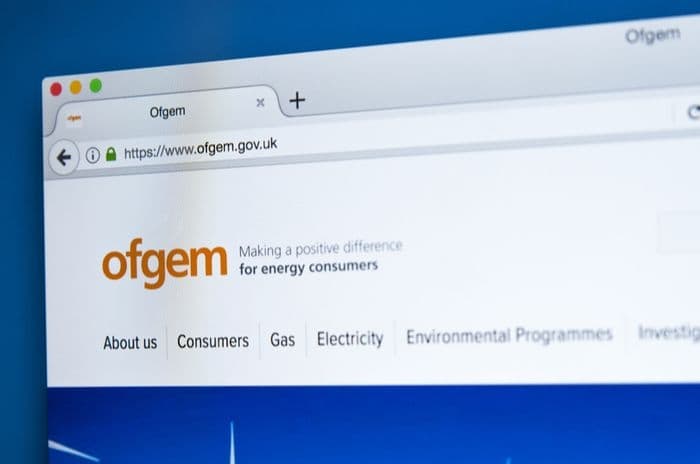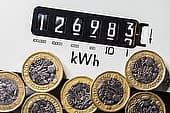Home > Energy > News > Ofgem price cap to help the most vulnerable energy customers
Ofgem price cap to help the most vulnerable energy customers
Energy customers in receipt of the Warm Home Discount will now have prices capped thanks to an intervention by energy regulator Ofgem.

Following growing pressure from Government to protect these vulnerable customers from high-cost standard variable tariffs, from 2nd February 2018 Ofgem will introduce a cap on how much these customers can be charged by energy suppliers.
Rachel Reeves MP, Chair of the Business, Energy and Industrial Strategy (BEIS) Committee recently called on Ofgem to do more. She said that "the energy market isn't working" and highlighted the need to protect vulnerable customers who "face specific challenges when it comes to switching tariffs and finding cheaper options".
The resulting move is part of Ofgem's already existing vulnerable customer safeguard tariff, and it's thought that the action will help around 1 million energy customers who have a prepayment meter to save an annual average of £120.
This follows on from Theresa May's promise last October that she would crack down on 'rip-off' energy tariffs by giving Ofgem the power to impose a cap on prices for all customers on a standard variable tariff. The current Ofgem price cap for vulnerable customers represents the first step towards this.
Why is the cap needed?
Put simply, the cap is needed because standard variable tariffs are so much more expensive than all the other deals offered by energy companies. They also last for an indefinite period of time.
In January of this year Ofgem published data detailing the price differences between standard variable tariffs and the cheapest tariffs that are offered by ten leading energy suppliers.
The results show a massive price difference. For example, an E.On customer would pay on average £1133 annually on a standard variable tariff and just £926 on the supplier's cheapest deals. First Utility customers face an average standard variable annual bill of £1132 compared to just £814 on the supplier's cheapest tariff.
To a greater or lesser degree, it's the same story for all ten companies included in the Ofgem data.
Who will benefit?
It tends to be the case that when a customer comes to the end of a cheap fixed-length deal, if they do not actively change tariff they are automatically placed on their energy supplier's standard variable tariff, and therefore end up paying more.
An Ofgem statement on this problem said that: "The retail market is not working for consumers who remain on their default tariff...We are particularly concerned with the impact this has on vulnerable customers. These consumers are more likely to find themselves on a default deal, and because of their circumstances, can suffer more harm as a result".
As a result, Ofgem has recently decided that energy companies should roll customers at the end of a fixed-length tariff onto a similar fixed-length tariff that is either the same price or cheaper than the tariff they have just finished. This move will help to provide further relief for all, but particularly for vulnerable customers.
Additionally, the newly announced price cap is targeted specifically at those customers who receive the Warm Home Discount. This Government scheme aims to help those at risk of fuel poverty with an annual energy bill discount of £140.
For vulnerable customers in receipt of the Warm Home Discount who are also on a variable tariff, the additional average saving of £120 under the new price cap will provide further relief.
Ofgem will reassess the price cap in April 2018 and every six months thereafter to keep on top of changes in the industry.
Is the cap enough?
In January, Ofgem CEO Dermot Nolan appeared before the parliamentary BEIS Committee to face questions from MPs about why the cap had taken so long to implement.
He apologised to vulnerable customers for not acting to cap bills earlier after MPs called him out for not doing more as the industry's regulator. He has also declined to take his bonus this year in acknowledgement of the regulator's failings.
However, he warned MPs that as a result of the cap energy suppliers may begin to increase the prices of some of their other tariffs to try and avoid losses.
In particular he warned MPs that energy companies would probably begin to roll out more expensive 'green' tariffs under the green-tariff exemption, which can allow energy companies to charge more for a tariff if the supply is claimed to be green.
This loophole will need to be tackled to further ensure that all customers, including vulnerable ones, are not charged above the odds for any tariff, whatever the energy supply.
Remember also that the price cap from Ofgem is not legislative and is aimed at protecting only the most vulnerable within the market, amounting to an extension of its already existing vulnerable customer safeguard tariff.
Mr Nolan has predicted that a full legislative clampdown from Government will probably not come into effect until December of this year, owing to the length of the legislative process, Ofgem's 50-60 day statutory consultation process with energy suppliers and a further grace period for the suppliers to implement the changes.
.Get insider tips and the latest offers in our newsletter

We are independent of all of the products and services we compare.

We order our comparison tables by price or feature and never by referral revenue.

We donate at least 5% of our profits to charity, and we aim to be climate positive.
Latest News

2 January 2024
Energy prices increase by 5%
23 November 2023
Energy price cap to rise 5% in January 2024
24 October 2023
Energy companies must do more to support customers

